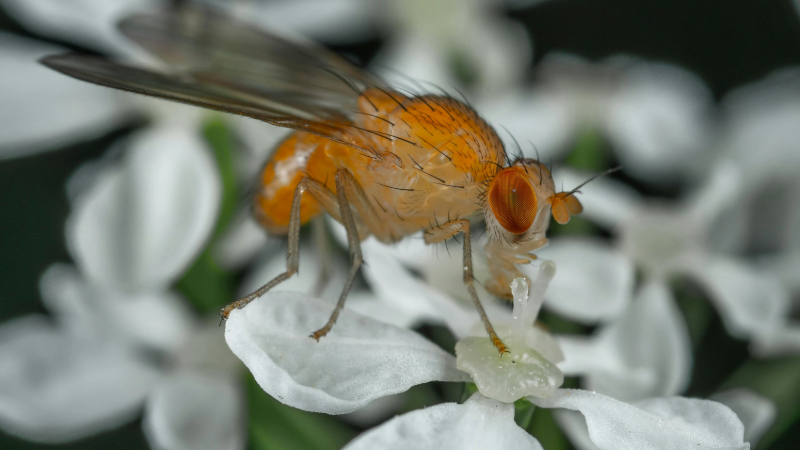Tiny genetic tweaks can lead to big differences in fruit flies’ eye size, scientists have discovered

An international team of scientists including experts from Oxford Brookes University has discovered that small changes in the activity of a single gene can have a big impact on fruit flies’ eye size.
Scientists from Oxford Brookes University, the University of Göttingen, Durham University and the University of Barcelona were involved in the research project.
Published in the scientific journal BMC Biology, the research focused on two closely related species of fruit flies, ‘Drosophila mauritiana’ and ‘Drosophila simulans’.
Oxford Brookes academics in the School of Biological and Medical Sciences were part of the research team. Dr Maike Kittelmann, Senior Lecturer in the School of Biological and Medical Sciences, used advanced imaging techniques to quantify the subtle but significant differences in eye size between these species. Dr Saad Arif and Dr Dani Santos Nunes conducted the initial high-resolution genetic mapping which identified ‘orthodenticle’ (otd) as a candidate gene.
Findings deepen scientific understanding of evolution and could open doors for medical and biotechnological advances in the future.
Dr Santos Nunes said: “Pinpointing how the orthodenticle (otd) gene affects eye size, scientists gain a better understanding of how genes control organ development. This knowledge could be useful beyond fruit flies — many genes that shape animal bodies are shared across species, including humans. Understanding these developmental processes might one day help us explore ways to address birth defects or organ growth disorders.
“Eye size also affects how organisms interact with their environment—larger eyes may enhance vision, aiding in predator avoidance or foraging. Understanding the genetic basis of such adaptations helps us see how species have evolved to thrive in different ecological niches.”
The study found that the timing of the activation of otd during development plays a key role in determining eye size. In Drosophilia mauritiana, the gene switches on earlier than in D. simulans, leading to larger eye units (called ommatidia) and, ultimately, bigger eyes.
"We were surprised to find that such a small change in gene expression could have such a dramatic effect on eye size," said Dr Isabel Almudi, from the University of Barcelona and one of the lead authors of the study. "This suggests that the evolution of eye size may be much simpler than we previously thought."
This process, known as heterochrony, refers to shifts in the timing of biological development. Scientists have long known it plays a role in evolution, but little is understood about the exact genetic mechanisms behind it. The research team identified a specific DNA region, called an enhancer, that influences when otd is activated—ultimately controlling eye size.
The team believe their findings could help explain how other organs, such as the brain, evolve. They now plan to explore whether similar genetic timing changes affect the size of other body parts.
Read the research paper Heterochrony in orthodenticle expression is associated with ommatidial size variation between Drosophila species in BMC Biology.
